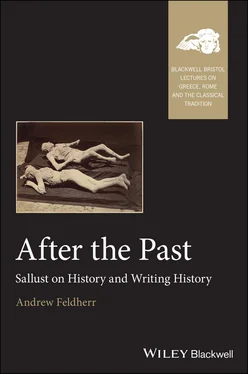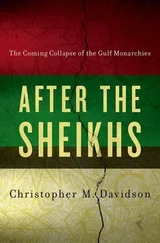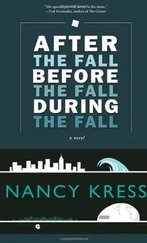1 ...8 9 10 12 13 14 ...20 Let me begin with the historical epitomes we know Brutus undertook. Three are attested, of the Gracchan historian Fannius (Cic. Att . 12.5B), of Coelius Antipater’s seven-book monograph on the Second Punic War (Cic. Att . 13.8), and of Polybius. These could easily be construed, like Sallust’s own work, as time off, an escape or alternative to action. Thus, on the eve of the battle of Pharsalus, Brutus, when not with Pompey, was sitting in his hot tent preparing a summary of Polybius (Plut. Brut . 4.8). We can also explain the vogue for epitomes by their utility for Romans with limited time, and perhaps irregular access to libraries, thanks to the demands and disruptions of the period. But there are larger ideological and historical factors that explain why these decades saw such a proliferation of epitomes. The first point to make about Brutus’ summaries is that they are described not as a breviary of events but specifically as the epitome of specific literary works. The epitomizer stands in relation to earlier events as the reader to a text, and this can reinforce the sense of separation and temporal distance between the recipient and the history described. Sallust similarly seems to survey all of Roman history when he chooses to “excerpt” the story of Catiline ( res gestae populi Romani carptim, Cat . 4.2).
This impression of separation and the new importance of writing as a medium for history make particular sense in light of Harriet Flower’s recent arguments for a reperiodization of the Roman republic. 7Key for Flower is the position of Sulla. She demonstrates that Sulla’s new constitution, far from restoring republican institutions and practices, represented a radical break from the past in its attempt to legislate what had previously been matters of custom. And this move away from a politics internally regulated through the shared values of a closed nobility went together with a radical transformation of the physical environment of the city and the loss through civil wars, proscription, and exile of the dramatis personae of political life. If the combination of violence and institutional disruption provoked a desire to assert continuity and connection with the past, the means by which this connection could be established would themselves have to be new. The monumental fabric of Rome that preserved memories of the past had itself been largely remade, and many of the patres whose oral instruction would have given meaning to monuments were dead or in exile. In the inevitable damage to the cultural practices that made Roman history part of a living tradition, texts must have taken on a new role, together with an increased recognition that for the new ruling classes after Sulla history was something more to be made than received. Mary Jaeger uses the phrase “Written Rome” to signal how Livy’s text constructs the city it represents. We are accustomed to viewing this phenomenon in tandem with the Augustan rebuilding of the actual city itself as well as the expansion of the audience who had to see Roman history as their history beyond those who had any direct experience of that city. But Flower shows that the combination of radical change in places, practices, and persons, and the expansion of power to new classes without a share in traditional media of commemoration was a recurring phenomenon in Roman history, and particularly acute in the aftermath of Sulla’s dictatorship. Sallust himself makes Sulla responsible for a new break with the moral traditions of the past, and, as we will discuss more fully in chapter 5, Sulla becomes the center of the chronological pattern that organizes his work. We should recognize that the prominence of Sulla inside the text corresponds to his role in transforming not only Rome itself but the very way in which the representation of the past was transmitted and conceptualized.
There is, of course, another side to this portrayal of Brutus’ rewriting of the past as a mark of distance. Again, this argument has to do with his writing summaries of texts rather than simply condensed accounts of history. Not only did each of these texts describe the pre-Sullan republic, but their authors, Antipater, Fannius, and, thanks to his associations with Scipio, Polybius, were themselves notable presences among the last generations of what Flower calls the republic of the nobiles . 8And here the layering of temporal distance becomes important. As Antipater looked back to the events of the Second Punic War, so Brutus looks back to him looking back. From this perspective, the Sullan break seems less absolute, just another temporal distance to be overcome. And, in place of a dramatic change in modes of commemoration that altered the function of written historiography, Brutus’ historical excerpting may configure writing history as the perpetuation of tradition.
The subject of the next of Brutus’ works I want to consider, his Cato , similarly challenged its readers to balance perceptions of continuity and change. Certainly from the distance of the Neronian period, Cato’s death could designate a sweeping break in Roman history, precisely coinciding with the death of libertas itself: neque enim Cato post libertatem uixit nec libertas post Catonem (“for neither did Cato survive freedom nor freedom Cato,” Sen. Constant . 2.3). And if, in the case of the epitomes, an awareness of Brutus’ reproduction of the works of pre-Sullan writers could mark writing itself as a manifestation of continuity between past and present, the treatment of Cato seemed to demand a similar attention to the presence of the narrative, but with an opposite effect. The various portraits of Cato produced sequentially in the year and a half after his death by Cicero, Hirtius, Brutus, and Caesar (not to speak of Fadius Gallus, Cic. Fam . 7.24.2) must have required considerable tact in balancing praise and blame with discretion. Cicero famously called the project a “problem for Archimedes” ( Att . 12.4.2), and there has been some scholarly debate about how balanced the contrasting accounts of Cato would have been, and what scope they gave for creating consensus. 9Nevertheless, irrespective of their contents, the network through which these rival Cato s were circulated may well have emphasized the social bonds connecting the authors in all camps. Atticus, after all, had a hand in distributing Hirtius’ salvo, which began with a copious praise of Cicero ( Att . 12.40.1). Caesar’s own elaborate tribute to the stylistic qualities of Cicero’s Cato (Plut. Caes . 3.4; Cic . 39; Plin. HN 7.117), echoed in a letter to the orator himself ( Att . 13.46.2), suggests that explicitly embedding the orator’s work in a very contemporary nexus of literary exchange may have been a strategy to neutralize the revolutionary potential of its content as well as to win favor for his own rebuttal of it. In this contest, then, attention to the stable present, strongly demarcated from the civil war past, contrasts with the impression of recreating the past through writing I have imagined for Brutus’ epitomes.
If it is true that the synchronic form of the treatises, their textual presence as objects of polite exchange, stood in tension with their subject matter, where current political rivalries about the state of Rome were activated by and through looking back at the life of Cato, that problematic relationship between present and the past may well have been manifested in other ways in this new literary form. In Cicero’s case, the perspective of looking back at Cato may well have been met by Cato looking forward toward the future from the time of his life. The precise problem with praising Cato, according to Cicero, was that it required “celebrating his foresight of the present circumstances, his struggle to prevent them from occurring, and his suicide lest he see them having come to pass” ( nisi haec ornata sint, quod ille ea quae nunc sunt et futura viderit et ne fierent contenderit et ne facta viderit vitam reliquerit , Att. 12.4.2). The traffic in Catos threatens to become dangerous for the author when the reader not only looks back at Cato himself but looks at the present as Cato. Such a double perspective may have been encouraged by the very title of the work which, as Kumaniecki (1970, 172), argues, was not the “ Praise of Cato ” but simply the “ Cato .” After the mortal Cato passes from the scene, Cicero’s work would present itself less as retrospective praise than as a textual avatar of its subject.
Читать дальше












